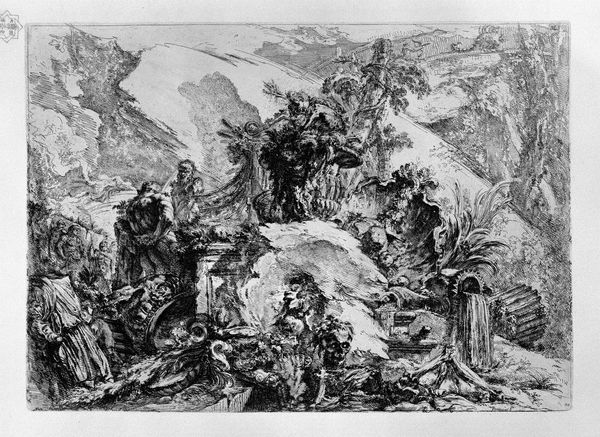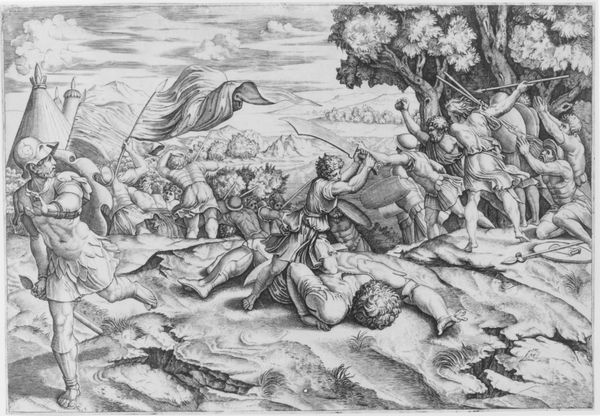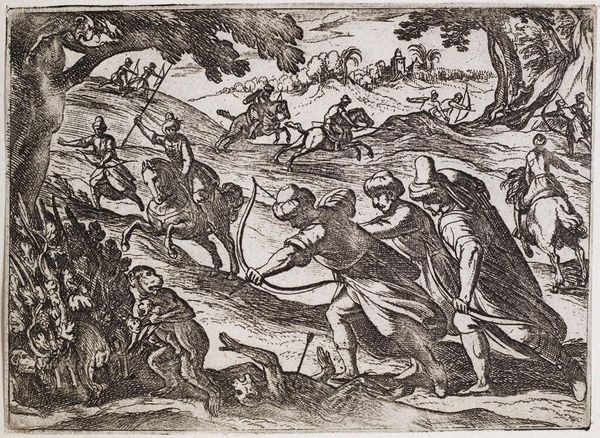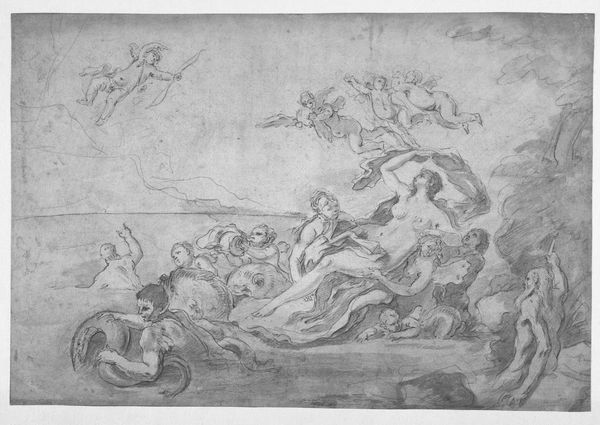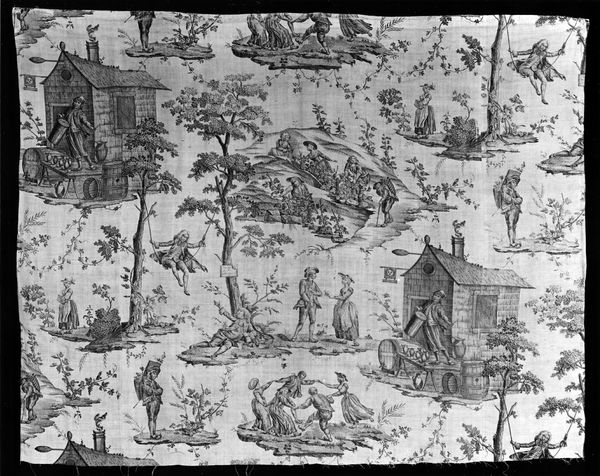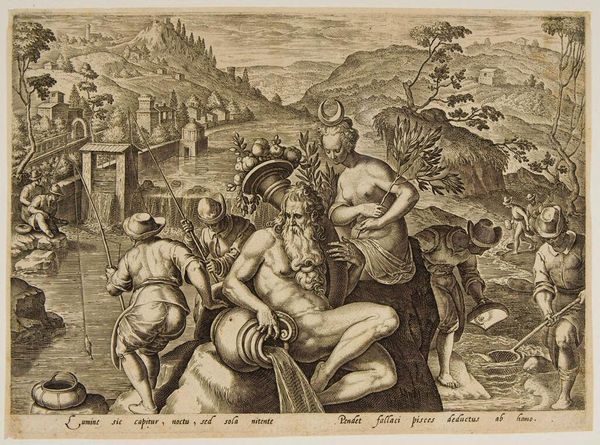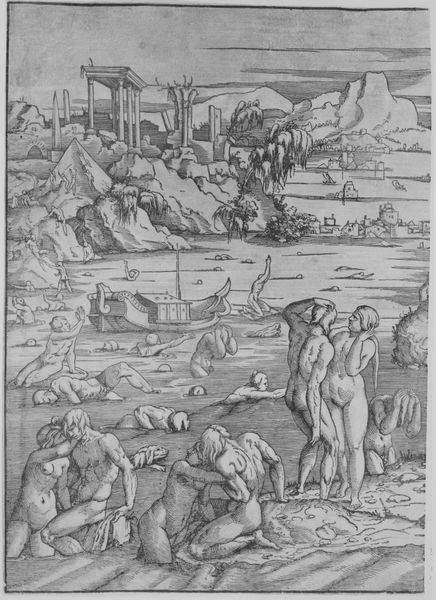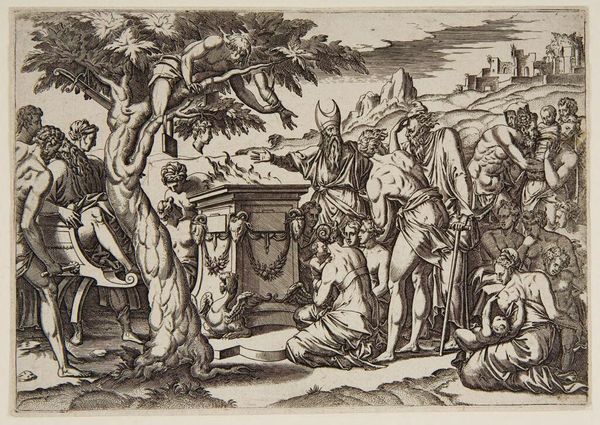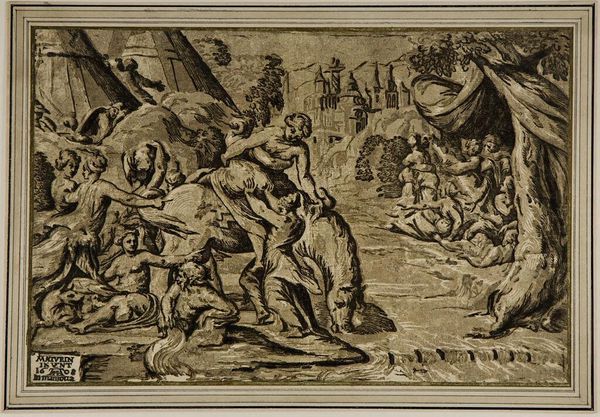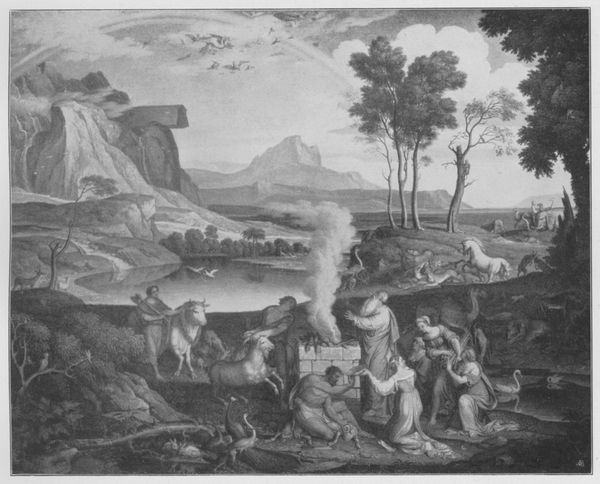
Copyright: CC0 1.0
Curator: Giulio Bonasone’s print, "Mercury and the Daughters of Aglauros," presents a vibrant scene teeming with classical figures. It feels incredibly lively! Editor: Indeed. The etching process allows for incredibly fine lines, really showcasing the skilled labor behind printmaking in the 16th century. We can observe the rise of printmaking as a means of disseminating classical stories to a wider audience. Curator: The way Mercury gestures towards the daughters, their expressions, the overall composition… it tells a story of power, envy, and perhaps even greed. Editor: And consider the socio-economic context. Prints like these were commodities, demonstrating the increasing appetite for classical imagery and Bonasone's skill in meeting market demands. Curator: It's fascinating how Bonasone uses light and shadow to create depth. I find it very engaging. Editor: His use of line emphasizes the commercial value of reproductive prints in spreading mythological narratives. Curator: Exactly, and by focusing on those narratives, we see how art shapes our understanding of cultural values. Editor: A great way to see the link between artistry, labor, and cultural consumption, wouldn't you agree?
Comments
No comments
Be the first to comment and join the conversation on the ultimate creative platform.


